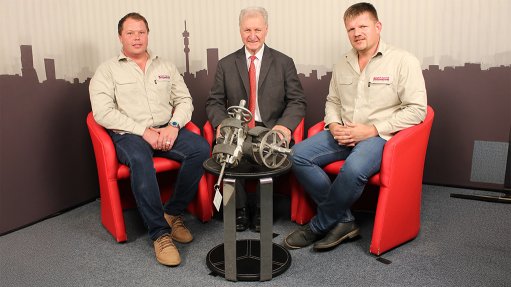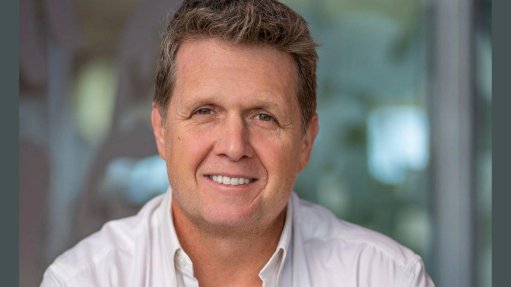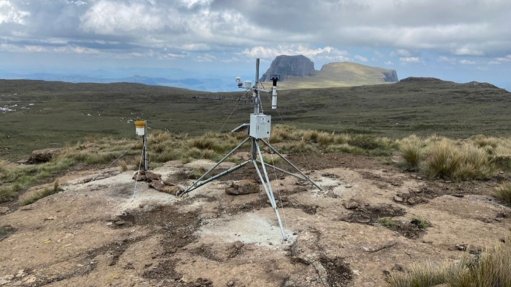Sporting complex completed two years early


TRACK RECORD The stadium was built in record time as a multifaceted sporting facility and arts and culture hub
An innovative design-and-build solution for the Japoma Sports Complex in Douala, Cameroon, has allowed for multinational engineering consultancy Aecom to decrease the proposed project timeframe by two years.
The Japoma Sports Complex consists of a 50 000-seat multi-sport stadium, an aquatics centre with an Olympic-sized pool, a 2 000-seat multi-sport hall, outdoor training facilities, and transport hubs and site infrastructure.
Ground was broken in 2017, with the formal opening anticipated by the end of this month.
Aecom’s scope of work encompassed a comprehensive scheme design for all engineering and architectural services, including master planning, and a design guardianship role as the project moved into production on site.
“Our role evolved into that of technical adviser, including support on matters of sequencing and construction programme, which had an unmissable deadline,” explains Aecom director, project director and structural lead Jon Leach.
Aecom associate director and structural engineer for the project Adrian Armstrong says it is a landmark project that demonstrates what can be done. From a blank slate with no masterplan in place to a fully operational stadium takes at least three to four years. However, the original timeframe was even tighter, with practical completion aimed for by October 2018.
Adding to the complexity was the fact that the bulk of the labour, materials and elements had to be imported from main contractor construction company Yenigün’s home country of Turkey. Thus, shipping delivery lead times required precise planning and logistics.
Constraints faced in this regard meant that many of the early trades were eventually carried out on site. A batch plant produced readymix concrete for all of the precast elements to be cast on site which, in turn, required a massive production yard for storage and handling.
Specialist items such as metal and steelwork were manufactured abroad and shipped over in containers, a process that could take up to three months. Hence, it was critical to look at the role of materials and technology in accelerating the design process.
The simple design that Aecom came up with focused on most of the services and accommodation in the West Stand, and an open concourse structure with limited envelope and building services in the other areas. Key to this structure was the double-spaced grid.
Armstrong elaborates that a traditional stadium has double the number of columns that Aecom ended up with on this concourse. This impacted on the façade and the overall architectural look and feel. It also meant that many of the larger elements could be prefabricated in fewer components to facilitate shipping.
“We worked closely with Yenigün from day one. “Both teams visited London and Ankara respectively, with daily photographs and drone videos a vital part of our technical adviser role,” reflects Armstrong.
The use of visual communications to bridge three different countries and languages on such a fast-track project ensured that programme-critical decisions could be made in a quick and informed manner. Virtual reality (VR) was used extensively throughout the design process.
“Our advice and opinions at the outset allowed us to propose a feasible design very quickly. “There was a watershed moment with Yenigün when it was shown VR visualisations to demonstrate the look and feel of the double-grid spacing, and how this impacted on the constructability. “They realised we were completely on their side, and not just attempting an iconic piece of architecture. Our design was functional and buildable, but also very striking,” Armstrong concurs.
The stadium sets new standards for the region. It is a modern stadium, fully compliant with FIFA and International Association of Athletics Federations requirements, with high-quality information technology and communication systems, light-emitting-diode floodlighting, media and broadcast facilities and audio-visual provisions.
Nevertheless, the design was based on the fact that this had to be a low-tech, easy-to-operate and maintain stadium.
The porous façade allows for natural ventilation, while also providing shelter from the heavy seasonal rainfall, a key factor in the design. Aecom director and lead architect on the project Luciano Di Domenico explains that the façade was inspired by one of the most familiar objects from daily life in Cameroon, namely a coiled basket.
“The delicate translucent wire construction of the stadium envelope and roof echo the flow of the basket’s weave.”
The main envelope is surrounded by stadium facilities in the shape of pods that also mirror a basket’s colourful, pattern-rich beadwork. These pods contain all the attendant catering and concessionary facilities.
The use of clear visual representation fed into the finished building as well as the design process, with the use of colour being a key aspect of the way- finding systems and spectator safety, as well as the architectural language of the building.
As a way of embedding the stadium into the local culture, Aecom’s design allows for the pods to be redecorated periodically by local artists through competitions hosted by the Local Centre of Arts, making Japoma Stadium not only a centre for sport but also for local arts and culture. The art installations will support the stadium legacy alongside restaurants and bars underpinning the socioeconomic sustainability of the project.
Aecom has considerable experience in stadium design-and-build, including the 2010 FIFA Soccer World Cup in South Africa. Further, the expertise of the South African team was called upon for the pitch design and drainage criteria at Japoma.
“The main reason we were awarded the stadium was our track record in multidisciplinary projects, which combines design and engineering, managing all the attendant risk for the client, and providing a single point of contact or interface,” concludes Armstrong.
Article Enquiry
Email Article
Save Article
Feedback
To advertise email advertising@creamermedia.co.za or click here
Comments
Press Office
Announcements
What's On
Subscribe to improve your user experience...
Option 1 (equivalent of R125 a month):
Receive a weekly copy of Creamer Media's Engineering News & Mining Weekly magazine
(print copy for those in South Africa and e-magazine for those outside of South Africa)
Receive daily email newsletters
Access to full search results
Access archive of magazine back copies
Access to Projects in Progress
Access to ONE Research Report of your choice in PDF format
Option 2 (equivalent of R375 a month):
All benefits from Option 1
PLUS
Access to Creamer Media's Research Channel Africa for ALL Research Reports, in PDF format, on various industrial and mining sectors
including Electricity; Water; Energy Transition; Hydrogen; Roads, Rail and Ports; Coal; Gold; Platinum; Battery Metals; etc.
Already a subscriber?
Forgotten your password?
Receive weekly copy of Creamer Media's Engineering News & Mining Weekly magazine (print copy for those in South Africa and e-magazine for those outside of South Africa)
➕
Recieve daily email newsletters
➕
Access to full search results
➕
Access archive of magazine back copies
➕
Access to Projects in Progress
➕
Access to ONE Research Report of your choice in PDF format
RESEARCH CHANNEL AFRICA
R4500 (equivalent of R375 a month)
SUBSCRIBEAll benefits from Option 1
➕
Access to Creamer Media's Research Channel Africa for ALL Research Reports on various industrial and mining sectors, in PDF format, including on:
Electricity
➕
Water
➕
Energy Transition
➕
Hydrogen
➕
Roads, Rail and Ports
➕
Coal
➕
Gold
➕
Platinum
➕
Battery Metals
➕
etc.
Receive all benefits from Option 1 or Option 2 delivered to numerous people at your company
➕
Multiple User names and Passwords for simultaneous log-ins
➕
Intranet integration access to all in your organisation



















